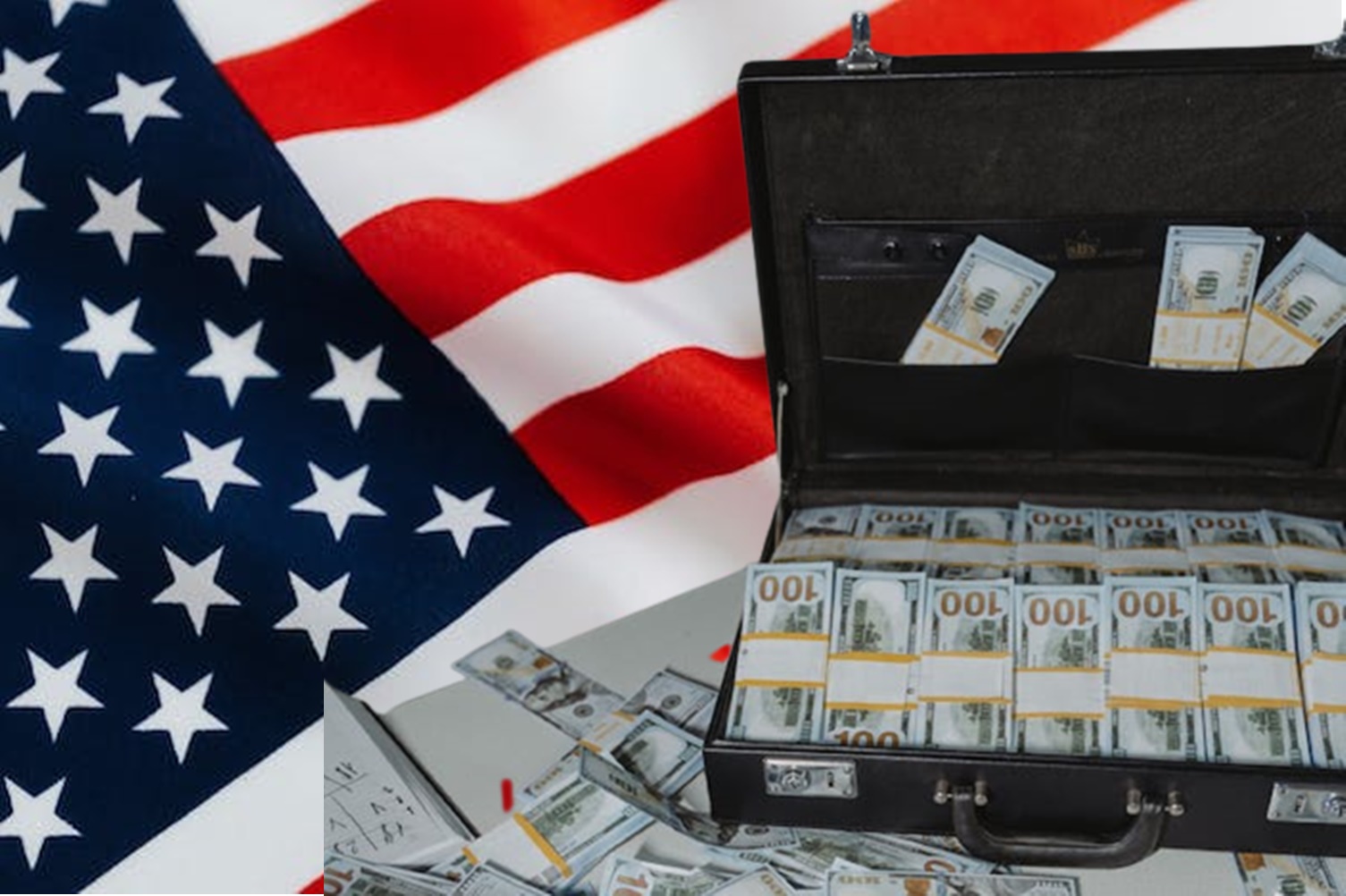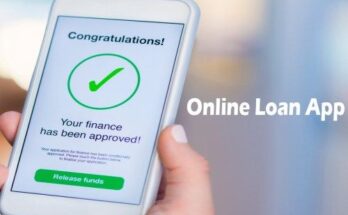Student Loan Forgiveness: In recent years, student loan forgiveness has emerged as a critical topic for millions of borrowers across the United States.
Understanding the nuances of student loan forgiveness programs can be pivotal for managing and potentially reducing the burden of student debt.
What is Student Loan Forgiveness?
Student loan forgiveness is a program where a portion or all of a student’s loan is erased, relieving them from the obligation of repayment. This concept isn’t just a financial relief; it’s a life-changer, offering new beginnings to millions burdened by student debt.
Exploring Different Types of Student Loan Forgiveness Programs
Diving deeper, we find a variety of student loan forgiveness programs, each tailored to specific needs and circumstances:
Public Service Loan Forgiveness (PSLF): Aimed at those serving in public sector jobs, this program forgives remaining loans after 120 qualifying payments under a qualifying repayment plan while working full-time for an eligible employer.
Teacher Loan Forgiveness: Dedicated to educators, this program offers forgiveness up to a certain amount for teachers working in low-income schools or educational service agencies for five consecutive years.
Income-Driven Repayment Plan Forgiveness: Under this plan, loans are forgiven after 20-25 years of qualifying payments, depending on the specific plan.
State-Sponsored Forgiveness Programs: Many states offer their own forgiveness programs for professionals like lawyers, healthcare workers, and others serving in high-need areas.
Military Service Forgiveness: Various branches of the military offer student loan forgiveness as part of their service benefits.
Forgiveness for Nurses and Healthcare Professionals: Specialized programs exist for nurses and healthcare workers, acknowledging their critical role in society.
Each program carries its own set of eligibility criteria and conditions, so it’s crucial for borrowers to thoroughly research and understand the requirements of each.
Student loan forgiveness is more than a financial concept; it’s a tool for empowerment, enabling graduates to pursue their dreams without the looming shadow of debt. As educational costs continue to rise, understanding and utilizing these forgiveness programs becomes increasingly essential.
Eligibility Criteria for Student Loan Forgiveness
Understanding the eligibility criteria for student loan forgiveness is crucial for borrowers seeking financial relief. This guide outlines the general requirements and delves into specific criteria for various programs.
General Eligibility Requirements
Loan Type: Typically, only federal student loans are eligible for forgiveness. Private loans are not usually covered.
Repayment Plan: Borrowers often need to be enrolled in income-driven repayment plans.
Payment History: A history of consistent, on-time payments is usually required.
Employment Status: Many programs require the borrower to work in specific sectors, like public service or non-profit organizations.
Loan Status: Loans in default are generally not eligible for forgiveness until they are rehabilitated.
Specific Criteria for Different Programs
Public Service Loan Forgiveness (PSLF):
- Employment in a government or non-profit organization.
- 120 qualifying payments under a qualifying repayment plan.
Teacher Loan Forgiveness:
Must be a full-time teacher for five complete and consecutive academic years in a low-income school or educational service agency.
Income-Driven Repayment (IDR) Plan Forgiveness:
Payments made under an IDR plan for 20-25 years, depending on the plan.
Nurse Corps Loan Repayment Program:
Employed as a registered nurse, nurse practitioner, or nurse faculty member.
Work in a health facility serving underserved communities.
Each program has its nuances and requirements, making it essential for borrowers to thoroughly research and understand the criteria specific to the forgiveness program they are considering. Consulting with a financial advisor or the loan servicer can provide additional guidance tailored to individual circumstances.
Benefits of Student Loan Forgiveness
Student loan forgiveness offers a multitude of advantages, not only to individuals but also to the broader economy and society. This article delves into these benefits, providing a clear understanding of the far-reaching impacts of such policies.
Financial Benefits for Individuals
Reduced Financial Burden: The primary advantage of student loan forgiveness is the significant reduction in financial stress for graduates. It eliminates or reduces the principal and interest they owe, freeing up income for other necessities.
Improved Credit Score: Loan forgiveness can lead to better credit scores. Without the burden of student loans, individuals are less likely to default on other debts, enhancing their creditworthiness.
Increased Savings and Investments: Forgiveness programs enable individuals to redirect funds that would have gone to loan repayments into savings or investments, contributing to their long-term financial security.
Enhanced Access to Housing and Business Loans: With less debt, individuals may find it easier to qualify for mortgages and business loans, aiding in wealth accumulation and entrepreneurship.
Broader Economic and Social Impacts
Stimulating Economic Growth: Loan forgiveness can result in increased consumer spending. Freed from the shackles of student debt, individuals are more likely to make significant purchases, stimulating the economy.
Boosting Job Mobility and Satisfaction: Without the pressure of student loans, individuals might feel more empowered to pursue careers aligned with their passions or to switch jobs, leading to increased job satisfaction and productivity.
Encouraging Higher Education: Knowing that loan forgiveness is a possibility may encourage more people to pursue higher education, leading to a more educated workforce.
Reducing Socio-Economic Disparities: Forgiveness programs, especially those targeted towards low-income graduates, can play a crucial role in narrowing the wealth gap and promoting social equity.
However, student loan forgiveness presents a beacon of hope, not just for individuals grappling with debt, but also as a catalyst for broader economic and social progress. By alleviating the financial strains of education loans, it paves the way for a more financially stable and equitable society.
How to Apply for Student Loan Forgiveness
This step-by-step guide is designed to help you understand and navigate the application process effectively, increasing your chances of approval.
Step 1: Check Your Eligibility
Before beginning the application process, ensure that you meet the eligibility criteria for student loan forgiveness. Different programs have varied requirements based on factors like the type of loan, your occupation, and repayment history.
Step 2: Gather Required Documents
Collect all necessary documents, such as loan statements, proof of income, and employment certification (if applicable). Having these documents ready will expedite the application process.
Step 3: Choose the Right Forgiveness Program
Research the different student loan forgiveness programs available, such as Public Service Loan Forgiveness (PSLF), Teacher Loan Forgiveness, or Income-Driven Repayment Plan Forgiveness. Select the one that best aligns with your situation.
Step 4: Complete the Application Form
Carefully fill out the application form for the chosen forgiveness program. Provide accurate and up-to-date information to avoid any delays or rejections.
Step 5: Submit Your Application
Submit your application along with all the required documents. Make sure to keep a copy of your application for your records.
Step 6: Continue Making Payments
While your application is being processed, continue making regular loan payments. This demonstrates financial responsibility and may positively influence the decision.
Step 7: Follow Up
Regularly follow up on your application status. Staying informed will help you address any issues promptly and keep the process moving forward.
Tips for Increasing Approval Chances
Double-Check Eligibility: Regularly review the program’s eligibility criteria to ensure you still qualify.
Accurate Documentation: Ensure all submitted documents are accurate and complete.
Seek Advice: Consider consulting a financial advisor or a student loan counselor for expert advice.
Stay Informed: Keep up-to-date with any changes in student loan policies or forgiveness program guidelines.
Timely Communication: Respond promptly to any requests for additional information or clarification from the loan servicer.
Applying for student loan forgiveness requires diligence and patience. By following these steps and tips, you can enhance your chances of approval and move towards financial freedom.
Common Misconceptions about Student Loan Forgiveness
Misconception 1: Everyone Qualifies for Forgiveness
Reality: Not all borrowers are eligible for student loan forgiveness. Programs like Public Service Loan Forgiveness (PSLF) or Teacher Loan Forgiveness have specific criteria, including the type of employer, repayment plan, and the number of qualifying payments.
Misconception 2: Forgiveness is Automatic
Reality: Forgiveness programs require proactive steps by borrowers. You need to apply for forgiveness, and in some cases, annually certify your employment. It’s essential to stay informed about the requirements and deadlines.
Misconception 3: Private Loans are Eligible for Federal Forgiveness Programs
Reality: Federal forgiveness programs are typically not available for private student loans. Private loan borrowers need to explore alternative options like refinancing or negotiating with their lender.
Misconception 4: Forgiveness Means No Tax Consequences
Reality: Depending on the program and current tax laws, forgiven debt may be considered taxable income. However, some programs like PSLF offer tax-free forgiveness.
Misconception 5: Forgiveness is a Quick Solution
Reality: Many forgiveness programs require a long-term commitment, often requiring 10 years of qualifying payments. It’s a gradual process and not a quick fix.
Misconception 6: All Federal Loans Qualify for Forgiveness
Reality: Certain types of federal loans, like Direct Loans, are eligible for forgiveness programs, but others, such as FFEL or Perkins Loans, may not be. Consolidating your loans can sometimes make them eligible.
Misconception 7: Skipping Payments Won’t Affect Eligibility
Reality: Consistent payment history is crucial for most forgiveness programs. Missing payments or defaulting on your loan can jeopardize your eligibility.
Student loan forgiveness is a complex topic shrouded in myths. Understanding the realities helps in making informed decisions about managing your student loans. Always verify information with reliable sources and consider consulting a financial advisor for personalized advice.
Challenges and Criticisms
This process can be particularly daunting for first-time applicants who may not be familiar with the intricacies of such programs. Key challenges include:
Complex Application Process: The paperwork can be overwhelming, with applicants needing to meticulously gather and submit a range of documents.
Eligibility Confusion: Determining eligibility is a major hurdle. Many students struggle to understand if their loan type or their employment qualifies.
Timing and Deadlines: Keeping track of submission deadlines is crucial, and missing these can result in disqualification or delays.
Information Overload: Applicants often feel inundated with information, making it difficult to discern the most pertinent and accurate guidance.
Criticisms of Student Loan Forgiveness Programs
While student loan forgiveness programs aim to alleviate the financial burden of education, they have faced their share of criticisms:
Inequity Concerns: Critics argue that these programs often benefit those with higher education levels and potentially higher future earnings, overlooking those who may need financial relief the most.
Economic Impact: There are concerns about the long-term economic implications of widespread loan forgiveness, including its effect on national debt and tax implications.
Program Limitations: Some critics point out that the scope of these programs is too narrow, failing to address broader issues in the education financing system.
Inconsistencies in Implementation: The varied implementation of these programs across different states and institutions can lead to confusion and a sense of unfairness among applicants.
However, while student loan forgiveness programs are a significant step towards addressing the burden of education loans, they come with their own set of challenges and criticisms that need careful consideration and ongoing refinement.
The Future of Student Loan Forgiveness
Currently, several programs offer loan forgiveness under specific conditions, such as working in public service or teaching in low-income schools. These programs have been instrumental in alleviating the financial burden for many graduates.
Examining Trends and Potential Policy Changes
In recent years, there has been a significant shift towards expanding loan forgiveness programs. This trend is driven by increasing recognition of the impact of student debt on economic stability and social mobility. Experts suggest that future policies may include broader eligibility criteria, making forgiveness accessible to a wider range of professions and income levels.
Predictions from Experts
Looking forward, experts predict a few potential developments:
Increased Accessibility: There’s a strong push for making student loan forgiveness more accessible to borrowers, possibly through simplified application processes and less stringent eligibility requirements.
Expansion of Qualifying Programs: We might see an expansion in the types of programs that qualify for loan forgiveness, potentially including private loans, which are currently excluded from most forgiveness programs.
Governmental Support: With growing awareness of the student debt crisis, there’s a likelihood of increased governmental support and funding for loan forgiveness programs.
The Role of Technology and Innovation
Another aspect to consider is the role of technology in streamlining loan forgiveness. Innovations in fintech could lead to more efficient processing of forgiveness applications and better management of loan repayment plans.
The future of student loan forgiveness is poised for significant changes. These changes aim to make higher education more accessible and reduce the long-term financial burden on graduates. As policies evolve, it’s crucial for borrowers to stay informed and take advantage of the programs available to them.
FAQs: Understanding Student Loan Forgiveness
1. What is Student Loan Forgiveness?
Student Loan Forgiveness is a program that allows borrowers to have all or part of their student loan debt forgiven, meaning they no longer need to repay some or all of what they owe. This can apply under certain conditions, like working in public service or making a set number of payments.
2. Who Qualifies for Student Loan Forgiveness?
Eligibility for Student Loan Forgiveness varies depending on the program. Common qualifying factors include employment in public service, teaching in low-income schools, or consistent repayment over a certain period.
3. How Do I Apply for Student Loan Forgiveness?
The application process differs based on the forgiveness program. Generally, you must submit an application to the loan servicer along with any required documentation proving your eligibility.
4. Does Forgiveness Include Private Student Loans?
Most Student Loan Forgiveness programs are only applicable to federal student loans. Private loans typically don’t qualify for these forgiveness programs.
5. Are Forgiven Loans Taxable?
The tax implications of forgiven loans vary. Some forgiven debts may be considered taxable income, while others, like those under the Public Service Loan Forgiveness (PSLF) program, are not. It’s advisable to consult a tax professional.
6. What Happens If I’m Denied Loan Forgiveness?
If denied, you remain responsible for repaying your loans according to your repayment plan. You can explore other forgiveness programs, loan consolidation, or refinancing options.
7. Can I Reapply for Forgiveness if Initially Denied?
Yes, you can reapply or appeal the decision if you believe there was an error in the assessment of your initial application.
8. How Long Does It Take to Process Forgiveness Applications?
Processing times vary depending on the program and individual circumstances. It’s important to stay in contact with your loan servicer for updates.
Conclusion
As we close, it’s crucial for you, the reader, to reflect on how these insights align with your personal financial situation. Student loan forgiveness is not a one-size-fits-all solution; it demands a nuanced understanding of your unique financial landscape. We encourage you to thoroughly assess your circumstances, perhaps consulting with a financial advisor, to determine if pursuing student loan forgiveness aligns with your long-term financial goals.
Remember, the journey to financial freedom is personal and varies greatly from one individual to another. Whether student loan forgiveness is the right step for you hinges on a careful evaluation of your financial goals, career aspirations, and the specific terms of the forgiveness programs available to you. Take this moment to consider the options, armed with the knowledge and insights shared in our article, and make an informed decision that best suits your path towards a stable financial future.


